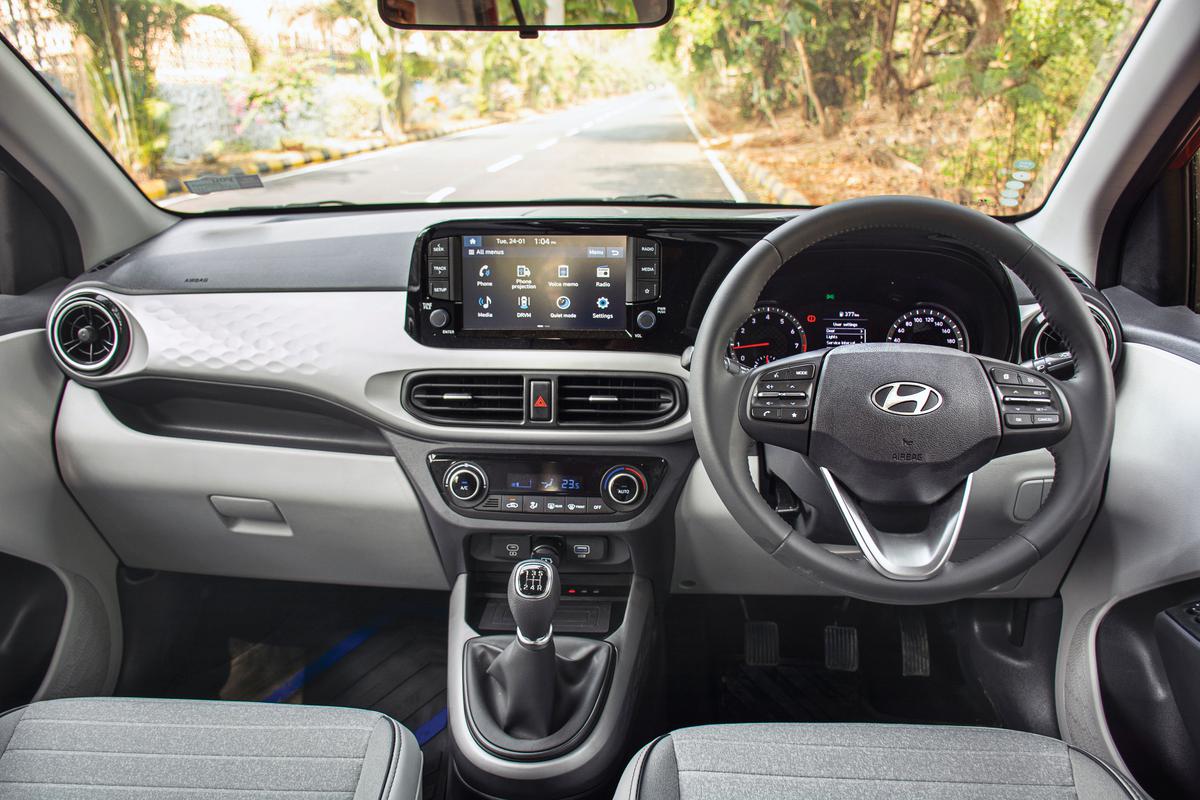In a world of SUV this and electric that, cars like the Hyundai Grand i10 Nios tend to fly under the radar. In fact, Hyundai hasn’t even made as much noise about this facelifted Nios as it did about the arrival of the updated Venue a few months ago. However, let us give due space to the intelligent and loved Grand i10 Nios and talk about what has changed.
The facelift today means a bigger grille and you get the same on the Nios. The grille makes most of the redone front bumper as well as the new tri-arrow daytime running lights towards the bottom. There have been no changes to the headlights or the bonnet, but a closer look reveals a flatter, satin-finished Hyundai logo in place of 3D chrome.
At the edges, it gets a new design for the 15-inch diamond-cut alloy wheels that tell you it’s an updated Nios. However, the styling at the rear has been beefed up. The boot lid has been profiled again but the reshaped tail-lights joined by a band are more prominent and now on trend. The tail-lamps get updated with LED elements while the band is just a reflector and doesn’t light up. The visual tweaks definitely make the Grand i10 Nios more attractive.
There are few changes inside. Lighter colours, new upholstery and a new instrument cluster with analogue dials (the previous one had a digital speedometer) help create a practical and well-thought-out interior look. Things like the relatively high-set seating, well-placed touchscreen and loads of storage space mean the Grand i10 Nios remains a car that puts you at ease right away.
As before, the Grand i10 Nios comes feature-packed in high-spec avatars. Keyless entry, push-button start, auto climate control, 8.0-inch touchscreen with Android Auto and Apple CarPlay, a wireless phone charger and rear AC vents are part of the package on the top-spec Asta trim offered here. Features included in this update include Type-C USB charging port and cruise control, although it is the long list of safety equipment that is worth mentioning. Front and side airbags are now standard across the range, while the top-spec versions add in curtain airbags as well.
Electronic stability control, hill start assist, tire pressure monitoring system and ISOFIX child-seat mounts are other inclusions on higher spec trims, all of which go above safety regulation norms. As before, the rear surprisingly stays open for two people, while the 260-litre boot can easily accommodate a large suitcase.

With the update, Hyundai has further trimmed the engine line-up of the Grand i10 Nios. The diesel was dropped early last year, while the Turbo variant with the funky 1.0-turbo-petrol engine was also discontinued, leaving the 1.2-litre, four-cylinder petrol as the sole engine on offer. It is available with a 5-speed manual gearbox or a 5-speed AMT, and there is also a CNG derivative.
The engine has been tuned to meet the upcoming RDE (Real World Driving Emission) norms and can also run on E20, which is a petrol with 20% ethanol blending. There is no difference in driving. It is a refined and easy going engine with enough power for city driving. It doesn’t have the gusto or responsiveness of Maruti’s K12 1.2 petrol, but it gets the job done.
Helping the Grand i10 Nios’ case as a city car is its light steering, smooth maneuverability and pleasant ride. For added convenience, you can opt for an AMT but the standard-fit 5-speed manual gearbox is lightweight and friendly to use as well. The Grand i10 Nios has seen a marginal increase in price but as before, is slotted between the more affordable Tata Tiago and the costlier Maruti Suzuki Swift, both of which also get AMT options and CNG versions.
We can say that the revised styling does its bit to freshen up the Grand i10 Nios, although it is the added security features that are the big draw. As a package, the Grand i10 Nios is a sensible family hatchback.